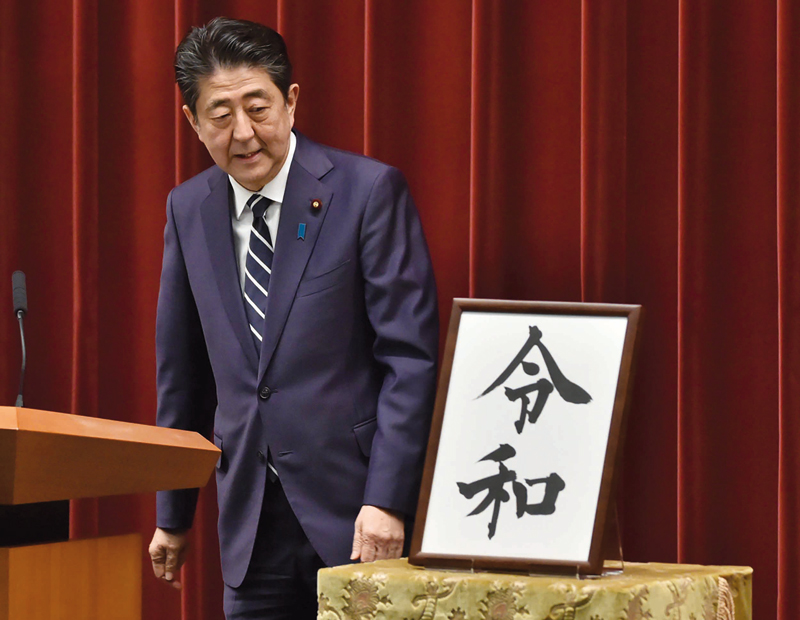

Japan’s new imperial era when Crown Prince Naruhito becomes emperor on May 1 will be called Reiwa, the government said on Monday, with Prime Minister Shinzo Abe saying it emphasized traditional values at a turning point in Japan’s history.
The era name, or “gengo,” is used widely in Japan — on coins, calendars, newspapers and in official paperwork. Although use of the Western calendar has become widespread, many Japanese count years by gengo or use the two systems interchangeably.
Naruhito’s ascension to the Chrysanthemum Throne will come a day after his father, Emperor Akihito, abdicates on April 30, ending the Heisei era, which began in 1989. Akihito will be the first emperor to abdicate in Japan in over two centuries.
Chief Cabinet Secretary Yoshihide Suga, speaking at a news conference shown live on national television, held up a white placard with the two Chinese characters of the new era name hand-written in black ink.
The characters used in the new name mean “order” or “command” and “peace” or “harmony”.
Crowds of people packed in front of large screen televisions across Tokyo roared and raised their phones to take photos of a serious-faced Suga holding up the new name.
The new name both emphasised the beauty of Japan’s traditional culture and a future in which everyone would be able to achieve their dreams, especially young people, Abe said.
“Our nation is facing up to a big turning point, but there are lots of Japanese values that shouldn’t fade away,” Abe told a news conference.
The new name was taken for the first time from an ancient anthology of Japanese poems, the Manyoshu, instead of a Chinese one, he said.
“It is a collection which expresses our nation’s rich culture, which we should take pride in, along with our nation’s beautiful nature,” Abe said.
“We believe this national character should be passed along to the next era.”
The government made the announcement a month early so government offices and companies can update computer software and make other preparations to avoid glitches when it comes into effect next month.
Guidelines stipulate that the era name should be appropriate to the ideals of the nation, consist of two “kanji,” or Chinese characters, and be easy to write and read. It cannot be in common use or have been used in combination previously. Scholars and bureaucrats had drawn up a list of candidates, and the cabinet made the final decision after consulting an advisory panel.
Traditionally, the characters have been selected from ancient Chinese texts, but this time they were from the Manyoshu, an ancient collection of Japanese poetry. There have been four era names in Japan’s modern history: Meiji (1868-1912), Taisho (1912-1926), Showa (1926-1989) and the current Heisei, meaning “achieving peace”. — Reuters
Oman Observer is now on the WhatsApp channel. Click here



